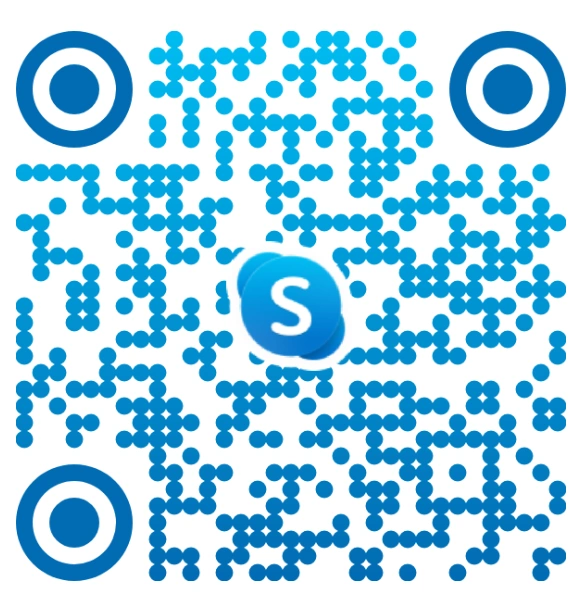FlutterFlow vs Bubble: Which No-Code Platform is Best for Your MVP in 2025?
Introduction
No-code platforms are becoming more popular among startups and businesses looking to launch MVPs faster. According to Gartner, by 2025, 70% of new applications developed by enterprises will use low-code or no-code technologies. This trend is making tools like FlutterFlow and Bubble essential choices in the product development process.
Each platform offers different strengths. Bubble.io is great for building powerful web apps without code, while FlutterFlow focuses on mobile-first development and allows teams to export real code. If you’re deciding between FlutterFlow vs Bubble, it’s important to understand which one fits your goals for speed, scalability, and customization.
This blog gives you a full no-code platform comparison, covering features, use cases, pros and cons, pricing, and performance. Whether you’re looking at Bubble.io vs FlutterFlow, exploring Bubble.io competitors, or searching for the best no-code platform for MVP in 2025, this guide will help you make the right choice.
What is FlutterFlow?
FlutterFlow is a visual app development platform built on Google’s Flutter framework. It helps users design and launch real mobile apps without writing complex code. Many startups prefer FlutterFlow for mobile-first Minimum Viable Products because it offers speed, flexibility, and the option to export clean Flut ter code for scaling later.
Key Features:
- Visual drag and drop app builder
- Code export for full customization
- Firebase integration and external API support
- Best for technical founders or teams with developer support
FlutterFlow is especially helpful for early-stage products where speed and design flexibility are key to success.
What is Bubble?
Bubble.io is a popular no-code platform for building full-featured web applications using visual tools. It includes everything—from backend logic to responsive design—making it a favorite for SaaS tools, marketplaces, and internal business apps.
Key Features:
- End-to-end web app builder
- Built-in database and visual workflows
- Plugin support for payments, APIs, and other tools
- Great for non-technical founders and startup teams
Compared to FlutterFlow, Bubble is more suitable for building web-based platforms like SaaS tools, marketplaces, and internal business apps, especially when backend logic and workflows are essential.
Also Read : Minimum Viable Product (MVP) Development: A Detailed Guide 2025
FlutterFlow vs Bubble: Complete Comparison
Choosing the best no-code platform depends on your MVP goals, product type, and available resources. Below is a detailed no-code platform comparison of FlutterFlow vs Bubble across essential factors.
1. App Types and Platform Focus
FlutterFlow focuses on building cross-platform mobile apps for iOS and Android. It’s ideal for mobile-first MVPs. Bubble is a web-first platform, great for launching SaaS tools, internal dashboards, and browser-based platforms without writing code.
2. User Interface and Design Capabilities
FlutterFlow gives full control over UI design with custom animations and components. It suits mobile-focused UX needs. Bubble’s drag-and-drop builder is more suited for web interfaces with responsive design, but it offers less design flexibility than FlutterFlow.
3. Workflow Logic and Automation
Bubble enables logic with easy-to-use visual workflows and automation tools. Non-technical users can set up app logic quickly. FlutterFlow supports event-driven actions and conditional logic but may need more planning or technical clarity to structure workflows effectively.
4. Backend and Database Integration
FlutterFlow supports Firebase integration and third-party APIs for dynamic backend needs. It works well for real-time features. Bubble comes with a built-in database and native workflow engine, which simplifies backend setup for non-coders building full-stack web apps.
5. Code Export and Customization
FlutterFlow allows you to export clean Flutter code, making it future-ready for scaling or handover to developers. Bubble is a closed system—code export isn’t supported—so long-term custom development may require a rebuild outside its environment. Teams often hire low-code developer support to ease this transition.
6. Performance and Load Handling
FlutterFlow delivers smooth performance and native-like speed for mobile apps. Bubble apps perform well for moderate web use cases but may slow down under complex logic or heavy user loads unless optimized with external plugins and workflows.
7. Scalability and Growth Readiness
FlutterFlow apps can scale by moving to full-code using exported codebases. Bubble scales within its environment, supporting app versioning and capacity upgrades. However, complex apps may need workarounds or expert support as your user base grows.
8. Learning Curve and Ease of Use
Bubble is beginner-friendly with lots of tutorials and a clear learning path for non-tech users. FlutterFlow is more technical, ideal for teams with some development background or those comfortable learning logic, design systems, and integrations.
9. Pricing Comparison (2025 Update)
FlutterFlow offers a free tier for basic apps, with paid plans for features like code export. Bubble charges based on app capacity and plugin usage. For MVPs, both platforms are budget-friendly depending on your performance and feature needs.
10. Community, Support, and Ecosystem
Bubble has a strong community, plugin marketplace, and support channels like forums and agencies. FlutterFlow’s ecosystem is growing fast, offering tutorials, Firebase support, and integration help. Both platforms have expanding ecosystems for no-code founders in 2025.
Also Read : Best Ways To Validate Your MVP Development
FlutterFlow and Bubble: Pros and Cons
When choosing the best no-code platform for MVP development, it’s important to look beyond features and evaluate the strengths and weaknesses of each tool. Here’s a balanced overview of the pros and cons of FlutterFlow and Bubble, based on their performance, flexibility, and usability in real-world MVP scenarios.
FlutterFlow Pros and Cons
Pros
- Real code export gives teams control over future scaling and customization
- Built on Flutter, enabling high-performance mobile experiences across Android and iOS
- Firebase integration simplifies backend setup and authentication
- Supports complex UI design with responsive layout features
- Ideal for tech-savvy teams looking for a hybrid of low-code and custom code
Cons
- Not beginner-friendly – requires some technical background to use effectively
- Limited native web support, making it less suitable for web-first products
- Relies on third-party backends, adding complexity to full-stack setup
- Advanced logic features need workarounds or dev involvement
- Smaller community compared to older no-code tools like Bubble
Bubble Pros and Cons
Pros
- Truly no-code – perfect for non-technical founders and business teams
- Includes native database and backend logic, removing the need for external tools
- Strong plugin library for common integrations like Stripe, Zapier, and Airtable
- Great for web-first MVPs, including SaaS and internal tools
- Large and active user community with templates and tutorials
Cons
- No native code export, which can limit flexibility for future development
- Not designed for native mobile apps, requiring workarounds for mobile deployment
- Performance can degrade in larger, complex apps without optimization
- Customization is limited for highly technical product features
- UI design tools are less flexible compared to mobile-first platforms
Also Read : A Step-by-Step Guide: Crafting the Perfect MVP for SaaS Startup
Which Platform is Right for Your MVP?
Choosing between FlutterFlow and Bubble depends on your app goals, team skills, and long-term plans. This section helps you match the right no-code platform to your specific startup needs so you can launch with confidence.
Platform Fit Based on Product Type
FlutterFlow is ideal for mobile-first MVPs needing native performance. Bubble fits better for web apps like SaaS tools, dashboards, and marketplaces with visual workflows and built-in database support.Team Skill Level and Available Resources
Bubble is great for non-technical founders due to its drag-and-drop interface. FlutterFlow works better for teams with AI experts who can handle advanced features and customization needs.Speed to Launch and Iteration Needs
Bubble enables quick MVP launches with built-in tools and plugins. FlutterFlow takes slightly longer but offers better flexibility later due to real code export and developer control.Customization and Long-Term Control
FlutterFlow allows full code export, giving better control for scaling and future development. Bubble’s closed system can limit flexibility when you need to add custom features later.Budget and Total Cost of Ownership
FlutterFlow’s pricing is friendly for early-stage mobile apps. Bubble costs grow with app complexity and plugin usage, so review your long-term needs before making a final decision.
Why Choose Amplework for No-Code/Low-Code Development?
Choosing Amplework means you’re backed by a team that understands both the speed of no-code/low-code development and the structure needed for scalable digital products. We don’t just build apps—we guide startups through platform selection, validate MVP strategies, and build solutions tailored to your business goals. Whether you’re deciding between FlutterFlow vs Bubble or exploring other no-code platform comparisons, we make sure you pick a tech stack that suits your product vision and growth plans.
Our team brings hands-on expertise in both FlutterFlow and Bubble to help you build faster without compromising on performance or flexibility. If you’re working on a mobile-first MVP, we help you leverage FlutterFlow’s native capabilities and exportable codebase. If you need a full-featured web app with logic-heavy workflows, we use Bubble to build and iterate quickly. We also support transitions from no-code to full-code when you’re ready to scale, ensuring your product stays future-ready without redevelopment from scratch.
Final Thoughts
Choosing the best no-code platform for your MVP in 2025 depends on your product type, team skills, and long-term goals. FlutterFlow is ideal for mobile-first apps that need native performance and future scalability through code export. Bubble, on the other hand, is better suited for web apps, SaaS tools, and internal dashboards, especially for non-technical founders. While FlutterFlow offers more control and performance, Bubble wins on speed and ease of use. Your final choice should reflect your launch timeline, customization needs, and available tech support to ensure a strong, scalable start for your product.
Frequently Asked Questions
Is Bubble better than FlutterFlow?
Bubble is great for web-based tools, while FlutterFlow is better for mobile-first apps. The right choice depends on your MVP needs—think Bubble vs Flutterflow for startups and app type.
Which platform is better for a mobile-first MVP?
FlutterFlow wins for mobile MVPs with its native performance and code export feature. It’s one of the strongest Flutterflow alternatives to traditional mobile development for startups aiming to scale.
Can Bubble handle full web app development?
Yes, Bubble.io is a full-stack web app builder with built-in database and logic. In the Flutterflow vs Bubble performance debate, Bubble often leads for fast web-based workflows—especially when supported by an experienced AI development company.
What are the pros and cons of Bubble.io?
Bubble pros and cons include fast web development, no-code ease, but limited code export. It’s perfect for solo founders who prioritize speed and built-in backend over long-term customization.
Does FlutterFlow offer more UI flexibility than Bubble?
In FlutterFlow vs bubble UI UX comparisons, FlutterFlow offers deeper design control and Flutter-based styling. Bubble is simpler to use but less flexible for advanced visual customization.
Is Webflow a good alternative to Bubble?
Webflow vs Bubble is a common debate. Webflow focuses on websites with design-first workflows, while Bubble.io vs Webflow highlights Bubble’s strength in app logic and backend features.
What are the best no-code platforms for MVPs in 2025?
The best no-code platform for MVP depends on your use case. For mobile apps, FlutterFlow leads. For web apps, Bubble or bubble.io competitors like Webflow and Mendix are strong.
Can I switch from Bubble to custom code later?
While Bubble is powerful, it’s a closed system. If you’re scaling, consider Flutterflow vs Bubble carefully—FlutterFlow allows code export, making transitions to custom stacks easier post-MVP.
How do Bubble.io’s pricing plans compare?
Bubble.io alternatives may offer more flexible pricing. Bubble’s plans scale with app usage and plugins, so consider long-term cost when evaluating Bubble vs Flutterflow for startups.
Is FlutterFlow a good option for long-term growth?
Yes. With features like code export, native performance, and strong community support, FlutterFlow is ideal for teams planning to scale beyond MVP. It’s a standout in no-code platform comparison lists.


 sales@amplework.com
sales@amplework.com
 (+91) 9636-962-228
(+91) 9636-962-228





